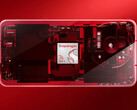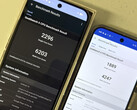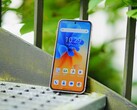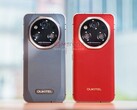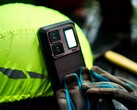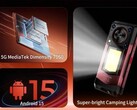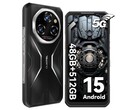An OLED screen is a great thing: strong colors, accurate reproduction and deep blacks. In addition, high-quality panels can offer high luminosity and potentially lower power consumption thanks to the option of completely switching off individual pixels.
This sounds ideal for outdoor phones that are often used in very bright environments and that are sometimes used for long periods in areas where a power socket is not immediately accessible. Nevertheless, IPS screens are still used in many devices in this class, why is that?
We recently tested the Oukitel WP210 which is already available for around 340 euros (it is currently even more expensive on amazon.com), is protected against the elements according to IP68/69K and actually has an OLED screen. So we can take a look at whether the display technology actually has advantages there.
The manufacturer has not exploited the potential advantage in terms of brightness: At around 523 cd/m², the screen isn't much brighter than comparable devices with an IPS screen. With the Oukitel WP210 the smartphone display is not particularly well calibrated. Although there are different modes for the color calibration, these do not really bring any improvement. White is displayed quite accurately, but darker shades of gray have a blue cast.
Colors are also far too oversaturated. So you can see that a good calibration is necessary, then OLED can actually bring advantages for outdoor phones. A positive example of this is the Motorola ThinkPhone 25: Bright and with very accurate color reproduction.
OLED displays have one major disadvantage: due to the technology, they have to use PWM to dim the brightness. However, this inevitably leads to flickering, which can cause headaches or eye fatigue for sensitive users. DC dimming can alleviate these problems, but it must be properly implemented. With the Oukitel WP210 the flickering is adapted to the screen's frame rate, so it shouldn't be too noticeable. Nevertheless, if in doubt, you should try out the screen before buying.
Conclusion
In theory, OLED makes a lot of sense for outdoor phones: It can make the screen content visible even in bright environments, shows very accurate colors for professional applications if required and can save energy on long trips with a lot of black on the screen. However, it must be implemented correctly for this, which is not the case with inexpensive outdoor phones such as the Oukitel WP210 is not always the case.
By the way, in our detailed test of the Oukitel WP210 we took a very close look at the OLED screen and also show the PWM chart from the oscilloscope or the measurements of the color display with the spectrophotometer.






